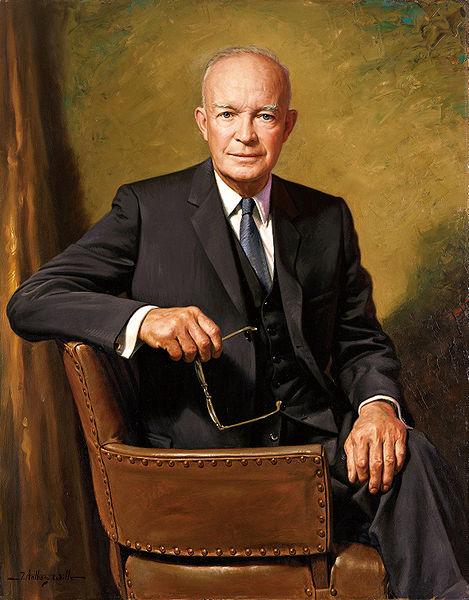As Mick Dundee demonstrates to us in the video above, a big knife has a quality all it's own.
Impressive, intimidating and unapologetic. These are all useful traits found in big blades. In today's world it's just too difficult to intimidate someone with a pen knife. Only a big blade will do.
From a practical standpoint the era of the big blade ended in the 1970s. Before then big blades were common sights on camping, hunting and fishing trips. Our collective national experience, fed by westward expansion, the Civil War and two World Wars told us that big blades were what you needed when afoot in the wilderness. This necessity hearkened back to the days when firearms were unreliable and slow to reload. You got one shot with your gun and then it was back to the blade to finish the fight. It didn't matter if you were attacked by a bear or were set upon by wild savages, nobody finished fights with pocket knives. You turned to the sword or a large knife.
But America's infatuation with big knives can actually be traced to a single historical incident.
In 1827 Jim Bowie attended a duel where many of the attendees carried pistols. The incident quickly devolved into a riot and everyone carrying a gun emptied it early in the fight. Things were ended using large knives and sword canes. This was the infamous Sandbar Fight near Natchez, Mississippi and the incident cemented the legend of Jim Bowie and his large blade in American popular culture. After the story of the fight hit the eastern newspapers the demand for large 'Bowie's knife' style blades became insatiable. No self-respecting woodsman would venture beyond his front yard without a large Bowie-style blade on his belt.
| The famous studio shot of Teddy Roosevelt in his buckskin outfit with a large Bowie-style blade stuck in his cartridge belt. Legend has it he bought the knife from Tiffany's! |
It took almost 150 years for American tastes in outdoor knives to change. I believe this was driven by two influences. First was a flood of laws that made carrying large knives in public illegal. Some jurisdictions went even further and simply banned them outright. Many of these laws had been in place for years in places like New York City but enforcement was expanded in the wake of the civil unrest of the 1960s. Suddenly carrying a large knife drew suspicious looks, even on camping trips. The pressure was on to abandon the large blade.
However, I attribute the real change to the influence of custom knifemakers like Bob Loveless and Jimmy Lile. These men were experienced hunters who championed the concept of the smaller drop point hunting knife. Large volume knife manufacturers picked up on the trend and soon you had companies like Gerber putting out affordable, high quality drop point knives. This trend is still going strong, and the drop point hunter blade style still rules.
And yet, the large Bowie-style blade is still immensely popular. In terms of volume sales it is probably as popular as it was 50 years ago. The reasons are simple - there are just some chores only a large blade can handle. As the late Ron Hood was fond of saying, "You can do small things with a big blade, but you can't do big things with a small blade." The other reason is that, well, the Bowie knife is just so damned American! American history and outdoor culture is so tightly intertwined with the Bowie knife that it is impossible to separate them. Anybody with any interest in American knives will one day own a big Bowie-style blade. It is a cosmic inevitability.
Knife manufacturers around the world are happy to supply the American addiction to the Bowie knife. Virtually all domestic and foreign manufacturers have a Bowie-style blade or two in their lineup. Some manufacturers seem a little embarrassed with their Bowie knife offerings, hiding them at the back of the catalog and referring to them as a 'clip point' style or the currently popular 'combat knife' (like that's any more politically correct than 'Bowie knife'). Others are up-front and in-your-face about their Bowie knife offerings. Loud and proud. No apologies or genuflections to political correctness. The bigger the better. Almost a big, fat middle finger to the anti-knife bed wetters.
Perhaps the most up-front, in-your-face, unapologetic big knife purveyor in the market today is Cold Steel Knives. Cold Steel's founder and president Lynn Thompson just loves big blades and the Cold Steel catalog is chock full of swords, machetes, kukris, tantos and, of course, some of the biggest Bowie-style blades available on the market today.
One of the Cold Steel blades I'm particularly taken with is the Trailmaster Bowie. In my opinion it is one of the best modern interpretations of the classic Bowie knife. This is a big piece of steel - the blade is 9 1/2" long and 5/16" thick - but it is surprisingly well balanced and quick in the hand. The blade sports a long false edge, or swedge and ends in a well formed clip point. The double brass guard perfectly complements the blade. The Kraton handle is a nod to modern materials and manufacturing, but the shape is reminiscent of the classic 'coffin-style' handles.
As Mick Dundee would say, "THAT'S a knife!" Loud, unapologetic, intimidating and so uniquely American in design. Just what you need to finish an argument. Or conquer the West.
Stay sharp!
Brian




